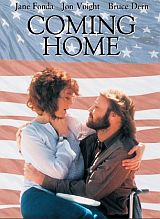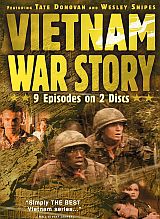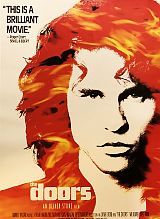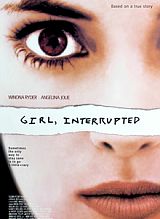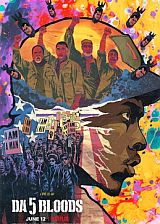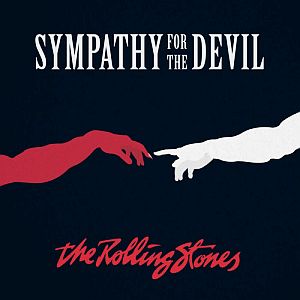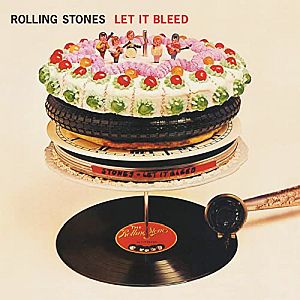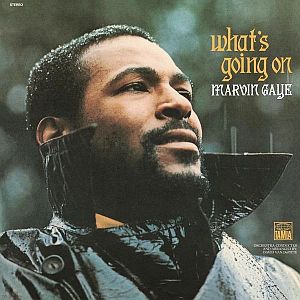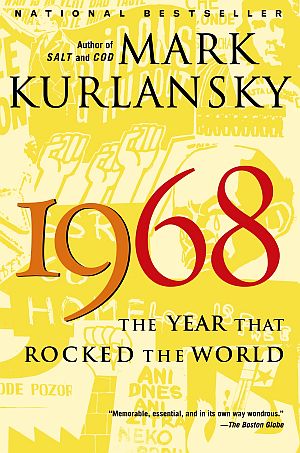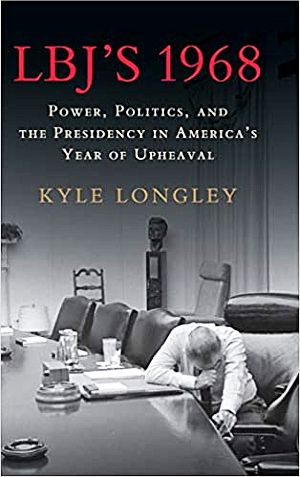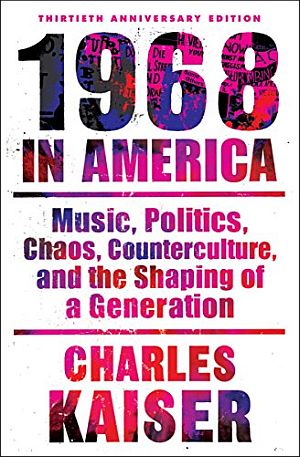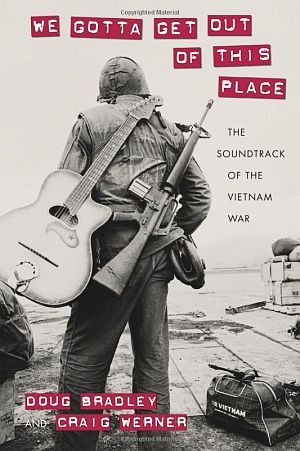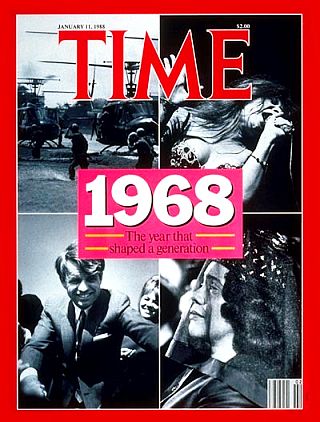
Time magazine cover from January 1988 marking 20th anniversary of 1968, with four photos from that year – of Vietnam War, rock music, Robert F. Kennedy, and Coretta Scott King at the funeral of her assassinated husband and civil rights leader, Rev. Martin Luther King. Click for Time's 1968 special edition hardback.
Music Player
“Time Has Come Today”
Chambers Brothers, 1968
The song, written by Willie and Joe Chambers, and performed by their group, a fivesome known as the Chambers Brothers, had gone through a few variations and false starts dating to 1966. However, an updated version of the song released in December 1967 soon found its way on the Billboard Hot 100, and by the summer/fall of 1968 rose to No. 11 on that chart, remaining there for five weeks.
But the legacy of “Time Has Come Today” would go well beyond its 1968 chart performance, becoming something of a musical touchstone; a song associated with those times and the strife and upheaval then occurring. “Time Has Come Today” helped define that era in national memory, if only by certain musical riffs from the song that were used repeatedly in later documentaries and film, helping to make it a late-1960s musical marker. It wasn’t the only such song, to be sure, as several others from that era – among them, “Sympathy for Devil” and “Gimme Shelter” by the Rolling Stones; Bob Dylan’s “All Along the Watchtower” as performed by Jimi Hendrix; and somewhat later, Marvin Gaye’s “What’s Going On” – would also serve as similar markers, as explained and sampled later below. But first, consider the Chambers Brothers.
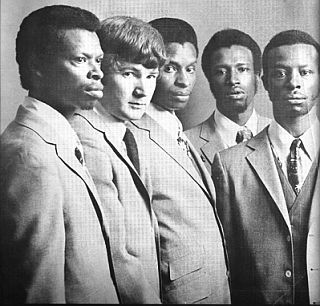
Chambers Brothers group, formal photo, circa 1960s.
Gospel Act
The Chambers Brothers were from Mississippi and started out as a gospel act, singing in their Baptist church choir. Initially, they were a group of four African American brothers – George, Joe, Lester and Willie Chambers.
In 1952 George, the eldest, after returning from a stint in the U.S. Army, decided to settle in Los Angeles. His three brothers soon joined him there, and they continued their music, building a following in folk and gospel music in southern California.
By 1965 they had been performing for more than ten years, but still remained relatively obscure. In that year they decided to add a drummer–a white musician named Brian Keenan–and began to change their act to a more rock/soul style. As for the brothers, Willie and Joe contributed guitar and vocals; Lester, harmonica and vocals; and George on bass. An appearance at the Newport Folk Festival in 1965 helped bring some national attention their way and wider bookings. Among these were some major venues, such as the Fillmore East, the Fillmore West and Harlem’s Apollo Theater. They were signed by a small label, Vault Records, and released a cover version of The Isley Brothers hit, “Shout,” but that release received little notice.

A jacket cover used for late 1967 release of Chambers Brothers’ single, “Time Has Come Today.” Click for digital.
In 1967, Columbia Records signed them to a contract. Earlier, in 1966, when they lived together in a rented a two-story house in Los Angeles, the Chambers Brothers had written a version of a song they called “Time Has Come Today.”
Joe wrote most of the lyrics after sitting in on a class at UCLA with Timothy Leary, and taking LSD. Willie put the music together for the song, and later contributed the line, “My soul has been psychedelicized.”
This first version, however, was met with some hesitancy and opposition at Columbia. Reportedly, Columbia head, Clive Davis, is said to have initially refused to do the song, suggesting it wasn’t “black music.” Still, the first version — which was not comparable in sound quality to its later hit version — came out anyway, and it bombed.
Meanwhile, at their live outings, the band had developed an extended version of the song running 11 minutes or so, and that version connected with audiences. David Rubinson, the Columbia staff producer then working with the group, heard them perform their extended version at the Electric Circus in New York, and found it “mind-blowing; everyone went nuts over it.”
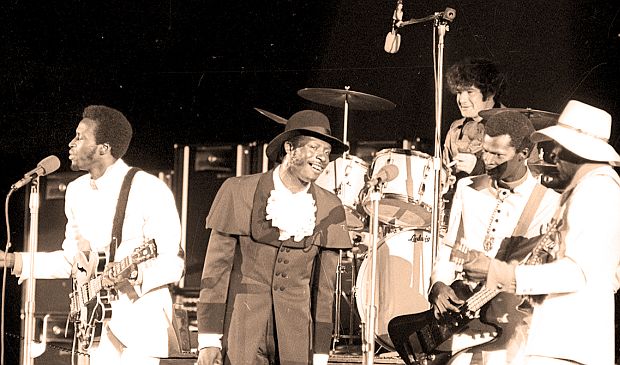
The Chambers Brothers performing in the 1960s. The group had many appearances in the popular concert venues and clubs of that era, among them the Fillmore (East and West), the Hollywood Bowl, The Electric Factory (Phila., PA), and others.
Shortly after that appearance, in early August 1967, the band went into Columbia’s New York’s Studio E with Rubinson and control booth engineer Fred Catero to record the long version. They did it completely live in just one take, aided in its final version by various mixing techniques, including echo, reverb, and other sound effects.
|
“Time Has Come Today” Time has come today Oh… The rules have changed today (Hey) Now the time has come (Time) Now the time has come (Time) Time, Time, Time, Time . . . . Oh…Now the time has come (Time) Now the time has come (Time) Time, Time, Time, Time. . . . |
Rubinson, in fact, was so excited with what they had that he instantly invited Clive Davis to come down to the studio at midnight to hear the track. And reportedly, that is what finally convinced Davis to commit to putting out a Chambers Brothers album.
The November 1967 Columbia album – titled, The Time Has Come – included the longer, 11-minute rendition of “Time Has Come Today” as the final track.
But despite its reception at some progressive FM radio stations, the song was far too long for single release and popular radio play. A shorter, radio-friendly version was made and issued as a single in December 1967.
Between the single and the album version, “Time Has Come Today” was heard increasingly across the nation by the summer and fall of 1968 and began to move up the charts.
In San Francisco it went to No. 1. On August 10th, 1968 it entered Billboard’s Hot 100 chart, and on September 15th it peaked at No.11 on that chart, where it stayed for five weeks. In all, “Time Has Come Today” spent 14 weeks on the Billboard 100.
By late December 1968, the album, The Time Has Come, had spent 27 weeks on the Billboard albums chart, peaking at No. 6 on that chart (although some accounts say No. 4).
On January 12, 1969 the Chambers Brothers performed an abridged version of “Time Has Come Today” on CBS-TV’s The Ed Sullivan Show, along with a medley of their No. 37 hit “I Can’t Turn You Loose” and “People Get Ready”.
In one review at AllMusic.com, Matthew Greenwald calls the song: “One of the finest and most accessible examples of psychedelic rock & roll to grace the radio airwaves,… An Afro-rock masterpiece, it’s guided by a fabulously simple and spacey guitar riff. The lyrics are a meditation of the acid-magnified state of mind and union of the time. The extended album version became one of the first examples of what was to become known as an ‘underground radio’ staple….”
The song, in any case, is now considered one of the landmark rock songs of the late 1960s. As a musical backdrop for the turbulent events of the late 1960s, “Time Has Come Today” has served as part of a fitting soundtrack – one of several songs that would fill that role.
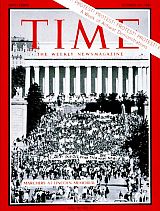 Wash., DC anti-war protest, 1967. |
 Vietnam War, October 1967. |
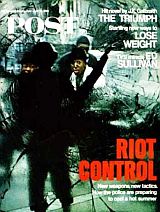 Riot Control, April 1968. |
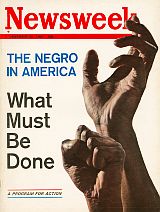 The Negro in America, Nov. 1967. |
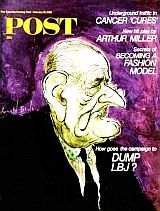 LBJ's woes, February 1968. |
 McCarthy's rise, March `68. |
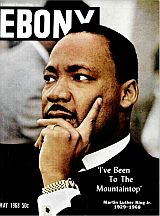 MLK assassination, April 1968. |
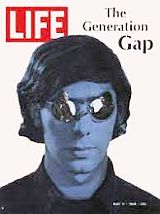 Generation Gap, May 1968. |
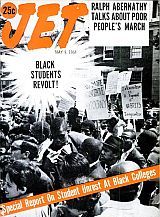 Black Students, May 1968. |
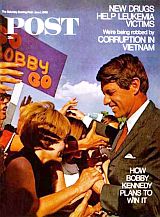 RFK’s campaign, June 1968. |
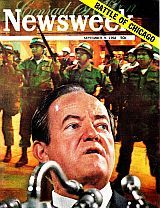 Street battles at Aug 1968 DNC. |
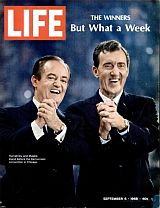 Dems Humphrey & Muskie. |
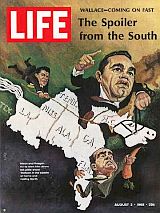 George Wallace, spoiler, Aug. `68. |
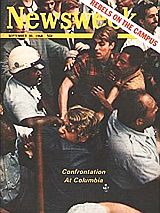 Protests at Columbia, Sept `68. |
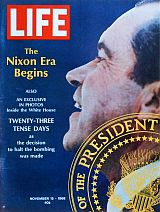 Nixon elected, November 1968. |
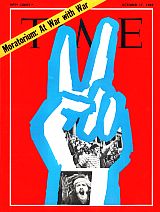 Protests continue, October 1969. |
 Nixon & Cambodia, May 1970. |
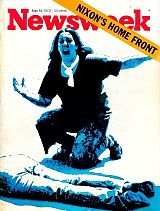 Kent State killings, May 1970. |
Time of Tumult
In the 1960s, the 1967-68 period stands out for the tumult and upheaval that occurred in America and around the world. Popular magazines of the day – some of which are shown in the column at right – featured the nation’s troubled times on its covers.
The Vietnam War and civil rights were the primary national concerns of that time – as campus protests, urban riots, and mass demonstrations flowed from those two overriding issues – and others, including two assassinations – Martin Luther King in April 1968 and Robert F. Kennedy in June 1968.
America’s role in the the Vietnam War was jolted early in 1968 after the North Vietnamese and Viet Cong mounted their surprise Tet Offensive in late January.
In matters of race, the summer of 1967 had seen 159 race riots across the U. S. In June there were riots in Atlanta, Boston, Cincinnati, Buffalo, and Tampa. In July riots occurred in Newark, Detroit, Birmingham, Chicago, New York City, Milwaukee, Minneapolis, Rochester, Toledo and other locations. As a result of these riots, and those of preceding years, President Johnson established the Kerner Commission to investigate the rioting and urban condition and issues of Black Americans. As a result of Johnson’s action, some publications, such as Newsweek, did special reporting.
The full Kerner Commission Report, issued on February 29, 1968, blamed lack of economic opportunity, failed social service programs, police brutality, racism, and the white-oriented media for racial divisions and the unrest that had ensued. The 426-page report became a bestseller.
The 1960s were also a time of youthful rebellion, when a “generation gap” ensued between baby boomers and their parents; a time of challenging authority and experimentation – of “sex, drugs, and rock n roll,” went the expression – which didn’t always turn out well.
1968 was also a presidential election year — one of the most tragic, divisive, and tumultuous on record. Embattled Democrat incumbent, Lyndon Johnson, was expected to seek a second term. Republican contestants from Nelson Rockefeller to George Romney vied from their party’s nomination with former Vice President Richard Nixon and running mate, Maryland Governor, Spiro Agnew, filling out the ticket.
The Democrats, however, had a lot more drama, as Sen. Gene McCarthy — an announced anti-war candidate — did well enough in the New Hampshire primary to become a challenger to President Johnson. Sensing Johnson’s vulnerability, Senator Robert F. Kennedy then jumped into the race, later becoming a favorite.
However, on March 31, 1968, at the end of a nationally-televised address on suspending the bombing of North Vietnam in favor of peace talks, Johnson surprised everybody by bowing out of the race.
In April 1968, civil rights leader, Dr. Martin Luther King was assassinated in Memphis, Tennessee, sparking weeks of riots and racial unrest all across the country. Two months later, in early June 1968, Robert Kennedy was assassinated in the kitchen of the Ambassador Hotel in Los Angeles after giving a victory speech upon winning the California primary that night.
By August 1968, the site of the Democratic National Convention, Chicago, became something of a nationally-televised war zone, as police and protestors battled in the streets over the Vietnam War and Democratic politics. Democratic Senators Hubert Humphrey and Ed Muskie emerged from the maelstrom as the Democratic ticket.
Meanwhile, in mid-October 1968 in Mexico City, at the Summer Olympic Games, African-American athletes Tommie Smith and John Carlos, at the medals ceremony, raised their fists in protest with black power salutes after winning their Olympic track events.
In the general election campaign that fall, Alabama governor, George Wallace, an avowed segregationist, had entered the race for President as a third party candidate, complicating the possible electoral outcome. As it was, Wallace and his running mate, General Curtis LeMay of WWII fame, took five southern states — Arkansas, Louisiana, Mississippi, Alabama and Georgia — garnering 46 electoral votes. But in the end that November, the Republican ticket of Richard Nixon-Spiro Agnew prevailed to take the prize.
In his campaign, Nixon had appealed to “the silent majority” and ran as a “law and order” candidate and someone who “had a plan” to end the war in the Vietnam. But for many in the nation that fall, there was an uneasy feeling about Nixon, not sure exactly what he would do as President.
The troubled ‘60s carried over into the 1970s, as Nixon expanded the Vietnam War with an invasion of Cambodia in May 1970, touching off more protests at home, resulting in National Guard shootings of students at Kent State University in Ohio (see “Four Dead in O-hi-o”). Beyond the war and everything else, there was more trouble ahead as something called Watergate would roil the nation through the mid-1970s.
In any case, the music of the era helped capture the turbulent national mood. And the Chambers Brothers’ “Time Has Come Today” – with its “tick-tick-tick” foreboding of unpleasant expectation – was part of that playlist, helping time-stamp the socio-political turmoil and disaffection. Without specifically referencing Vietnam, civil rights, or other concerns in its lyrics, the song’s musical arrangement and energy alone served to convey one seminal message: “it’s time for change.” The song’s power, in part, was in what was not said. The musical frame alone was sufficient enough, capturing the times, but allowing space for listeners to provide their own thoughts and feelings.
“Time has come today,” marked the moment … as a time of transformative change … where the old ways seemed obsolete but unwilling to die while the new appeared promising but not yet able to be born. Academics in later years would offer additional perspective on the song. In the fall of 2016, George Lipsitz of the University of California at Santa Barbara, writing as prelude to his piece “‘Time Has Come Today’: Why Sociology Matters Now” in the Michigan Sociological Review, offered the following:
…In the midst of tumult and turmoil in 1967, in a society that seemed to be falling apart, the Chamber Brothers wrote, recorded and released a song titled “Time has Come Today.” Its lyrics gestured toward the chaotic but profound transformations in social life emanating from mass mobilizations by people of color, a counter culture created by disaffected but idealistic young people, and the collateral consequences of the war in Vietnam, urban insurrections and assassinations of beloved leaders. “Time has come today,” marked the moment of its production, distribution and circulation as a time of transformative change, a crossroads where the old ways seemed obsolete but unwilling to die while the new appeared promising but not yet able to be born. The composition and performance of the song marked social crisis as a temporal crisis in several ways. In an era when popular songs usually lasted only three minutes, “Time Has Come Today,” went on for eleven. The drummer for the group marked the passing of seconds by imitating out the tick tock of a clock with sticks striking cow bells and wood blocks. The song changed rhythms frequently but the vocal arrangement featured voices consistently shouting “time” on the down beat. With its urgent call for recognition of the present as a time of action and invention, “Time Has Come Today” endures as a material register of the shakeup in social relations and generation of new social imaginaries in the wake of the crises of the 1960s.
In Film & TV
Another enduring testament to the song’s association with the tumultuous late 1960s, is its frequent use in soundtracks for documentaries and films of that period, some depicting protest, the war, and/or social unrest.
In a later interview with the Los Angeles Times, Willie Chambers had noted: “That song was a monster. It’s been used in over 160 movies, commercials and television shows.”
However, not all of these uses relate to the 1960s or its issues, but a number of them do have 1960s storylines or period imagery (click images for Amazon.com pages).
Coming Home, a 1978 Academy Award winning Vietnam War-related film, stars Jane Fonda, who plays a married volunteer medical attendant who has an affair with wounded veteran (Jon Voight). The director of that film, Hal Ashby, used all 11 minutes of the long version of “Time Has Come Today” as the backdrop to the climactic scene when Marine Captain Robert Hyde (Bruce Dern) “comes home” to his unfaithful wife (Fonda). Captain Hyde has an “out-of-his-mind” breakdown and rampage scene, during which the “tick-tick-tick” and full version of “Time Has Come Today” runs as the background music.
Another film about Vietnam, Casualties of War, released in 1989, starring Sean Penn and Michael J. Fox, also uses the song, as does the 1991 film, The Doors, an Oliver Stone film about Jim Morrison, frontman for the 1960s rock group, The Doors.
A 1998 documentary film, 1968: The Year That Shaped a Generation, narrated by long-time CBS newsman, Walter Cronkite, had the song in its score. Girl, Interrupted, a 1999 American psychological drama set in 1967-68, starring Winona Ryder, Angelina Jolie, Whoopi Goldberg and others, also uses the song, as did the The Zodiac, a 2006 psychological thriller based on the Zodiac serial killer active in northern California in the 1960s and 1970s. The song is also heard in Da 5 Bloods, a 2020 Spike Lee war drama, follows a group of four African American Vietnam War veterans who return to the country in search of the remains of their fallen squad leader and a stash of gold treasure they buried while serving there.
On television, the song was used in the 1987-88 HBO TV series, Vietnam War Story, and also in the History Channel’s 2011 documentary series, Vietnam in HD. The PBS show, American Experience featured “Time Has Come Today” as its theme song during 2009-2010. In Ken Burns’ PBS Baseball documentary, the song is heard during a 1960s segment. It is also used in video games – featured in Homefront and also used in Call of Duty. Beyond Vietnam documentaries and/or films about the late 1960s, “Time Has Come Today” is also heard in more than a dozen other films and TV shows that have nothing to do with the 1960s, but is used primarily as a play on it’s “time” motif for suspense or other purpose. Still, the repeated use of “Time Has Come Today” for film and documentary soundtracks dealing with Vietnam and the late 1960s has given the song historic bona fides and burnished it deeply in social memory as attached to those troubled times.
Other Songs
“Time Has Come Today”, however, is not the only “musical marker” to be associated with late-1960s angst and upheaval, as anyone from that era or paying attention to music history will acknowledge. A number of other songs might also be considered in that same “time-stamp” category – i.e., music associated with the times but not necessarily containing protest-specific lyrics or intent.
The Rolling Stones, for one, have a few tunes from those years that also weigh in as late-1960s musical markers. Among these is “Sympathy for The Devil,” recorded in June 1968, and released in December that year with their Beggars Banquet album.
While the lyrics for this song, narrated by “Lucifer” (Mick Jagger), deal with historic events of war, carnage and assassination, the song’s sentiments could easily segue to those of the troubled 1960s. An earlier Stones’ tune from 1965, “Paint It Black,” a funeral dirge for a lost lover, came to be associated with Vietnam, used in film and TV. And another, “Street Fighting Man,” had its inspiration in part from 1960s rioting and protests.
But perhaps “Gimme Shelter,” written by Mick Jagger and Keith Richards, and powered in part by the soaring female vocals of Merry Clayton, takes the prize as the Stones’ “most 1960s-ish turbulent” song.
Music Player
“Gimme Shelter”
Rolling Stones, 1969
“Gimme Shelter” was recorded and released in 1969, the first song on their Let It Bleed album, and as Jagger would explain some years later, was inspired, in part, by the Vietnam war and its protests:
…Well, it’s a very rough, very violent era. The Vietnam War. Violence on the screens, pillage and burning. And Vietnam was not war as we knew it in the conventional sense….It was a real nasty war, and people didn’t like it. People objected, and people didn’t want to fight it…[Gimme Shelter is] a kind of end-of-the-world song, really. It’s apocalypse; the whole record’s like that.
American bard, Bob Dylan, known for his extensive oeuvre of civil rights and anti-war protest songs, many from the early and mid-1960s, also wrote, “All Along The Watchtower,” which was initially released by Dylan in November 1968. However, this song actually became a more powerful “late-1960s” period piece when covered and released by Jimi Hendrix in September 1968. (Hendrix had received an early Dylan tape of the song).
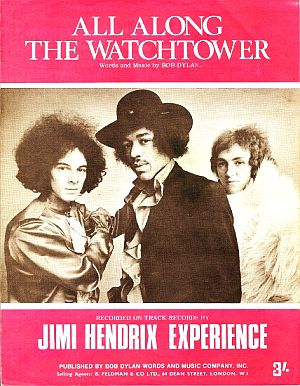
Sheet music for Jimi Hendrix Experience version of “All Along The Watchtower,” Hendrix here with bandmates Noel Redding & Mitch Mitchell. Click for digital.
Music Player
“All Along The Watchtower”
Jime Hendrix Experience, 1968
Dylan, meanwhile, had already contributed a number of classic civil rights and anti-war songs, among them: “Blowin` in Wind,” (1963, also a Peter, Paul & Mary hit), “The Times They Are A-Changin'” (1964), “Master of War” (1963), “Oxford Town” (1962, enrollment of black student, James Meredith at the University of Mississippi), “Only A Pawn in Their Game” (1964, assassination of Medgar Evers), and others. But Dylan had high praise for Hendrix’s version of “Watchtower,” and also for a 1970 tune by Jimmy Cliff, “Vietnam“.
There were, of course, numerous artists who contributed vintage period and/or protest music in the 1960s. A Buffalo Springfield song from 1966, “For What It’s Worth,” while not written as an anti-war anthem, conjured up those sentiments in later years, and like other songs of that kind, would be heard in later film accounts of the war and ‘60s protests. Pete Seeger, folk singer and songwriter from the 1950s with the Weavers folk group, had a hand in various songs used in 1960s protest music, including, “Where Have All The Flowers Gone,” “Turn, Turn, Turn,” and “If I Had A Hammer” — as well as helping popularize the civil rights anthem, “We Shall Overcome.” Seeger attracted some controversy in 1967 with his song, “Waist Deep in the Big Muddy,” initially banned from a national TV show (though later aired) for hitting too close to incumbent President Lyndon Johnson, then mired in Vietnam. Added to the folk and protest contributions of Seeger and Dylan, are the works of Joan Baez, Phil Ochs, Tom Paxton and others.
The Beatles’ released “All You Need Is Love” in July 1967, charged at one point as “selling peace in a time of war,” and for some hard-line leftists at the time, a little too pacifist. “Revolution,” released by the Beatles in August 1968, was sympathetic to the cause but eschewed violence. Creedance Clearwater Revival’s “Fortunate Son,” written by John Fogerty and aimed at protected elites, was released in November 1969, and became part of the anti-war hit parade of its day. And in May 1970, after four students were killed by National Guard troops during anti-war protests at Kent State University, the folk-rock group, Crosby, Stills, Nash & Young released their protest song, “Ohio.” There were also other songs in the period, such as Bobby Darin’s “Simple Song of Freedom,” from 1969, that called for an end to war and exploitation generally, as did John Lennon’s “Give Peace A Chance” of that year, and later more powerfully, his “Imagine” of 1971.
Among African American artists with vintage 1960s period music and/or protest songs are: Sam Cooke with “A Change Is Gonna Come” (1965), Otis Redding and Aretha Franklin for “Respect” (1965 and 1967, respectively), and James Brown’s 1968 hit song, “Say It Loud – I’m Black and I’m Proud“.Music Player
“What’s Going On”
Marvin Gaye, 1971
Marvin Gaye’s “What’s Going On” (1971), was originally inspired by a police attack on anti-war protestors in Berkeley witnessed by “Obie” Benson of the Four Tops, who penned an earlier version of the song, then gave it to Gaye who expanded the subject line to civil rights, urban unrest, and other concerns (Click for lyrics). Gaye’s conversations with his brother Frankie, who served for three years in Vietnam, and his cousin’s death in the war, also figured into the composition. In 2011, the song was ranked No. 4 on Rolling Stone‘s 500 Greatest Songs of All Time .
In addition, Curtis Mayfield & The Impressions’ “People Get Ready” (1965), a gospel song, is said to have been a favorite of Martin Luther KIng Jr., who regarded it the unofficial anthem of the early civil rights movement. Nina Simone’s, “Mississippi Goddam” (1964) and Stevie Wonder’s, “Living For the City” (1973) are also part of the civil rights genre. And earlier Motown songs, such as “Dancing in the Street,” “Nowhere To Run,” and “Quicksand”(1964-65) by Martha and the Vandellas, though not initially intended as such, became more politically-freighted with use in late 1960s civil rights rallies.
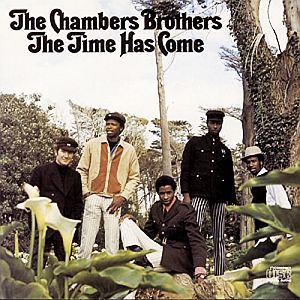
“Time Has Come Today" was featured on The Chambers Brothers’ November 1967 album, titled, “The Time Has Come.” Click for album or digital singles.
The songs mentioned in this story are only a small part of that much larger catalog, and are only offered as examples, with no slight intended for any number of other important songs and artists with music of that period and/or genre. See references below for other sources.
Additional stories at this website on music history, artist profiles, song and album histories can be found at the “Annals of Music” category page, or visit the Home page for other story choices. For two stories on the 1968 U.S. presidential race, see: “1968 Presidential Race, Republicans” and “1968 Presidential Race, Democrats,” each of which also explores the role of celebrities in those campaigns.
Thanks for visiting – and if you like what you find here, please make a donation to help support the research, writing, and continued publication of this website. Thank you. – Jack Doyle
|
Please Support Thank You |
____________________________________
Date Posted: 7 September 2021
Last Update: 3 November 2021
Comments to: jdoyle@pophistorydig.com
Article Citation:
Jack Doyle, “Time Has Come Today – The Chambers Brothers, 1968,”
PopHistoryDig.com, September 7, 2021.
____________________________________
Sources, Links & Additional Information
“The Chambers Brothers,” in Holly George-Warren and Patricia Romanowski (eds), The Rolling Stone Encyclopedia of Rock & Roll, Rolling Stone Press, New York, 3rd Edition, 2001, p. 161.
“Time Has Come Today,” Wikipedia.org.
Lyrics, “Time Has Come Today,” The Chambers Brothers, Lyrics, Genius.com (produced by David Rubinson, Album, The Time Has Come).
“Time Has Come Today,” by The Chambers Brothers, SongFacts.com.
Matthew Greenwald, Song Review, “The Chambers Brothers: Time Has Come Today,” AllMusic.com.
Abel, “No. 13: ‘Time Has Come Today’,” Psyche-delicSight.com, July 26, 2011.
Steve Jennings-x, “Classic Track: The Chambers Brothers, ‘Time Has Come Today’,” MixOnline.com, March 1, 2013.
Jeff Tamarkin, “When the Chambers Brothers’ ‘Time’ Had Come,” BestClassicBands.com, September 20, 2017.
Willie Chambers website, Willie-Chambers .com.
Matthew Twombly, Research by Kendrick McDonald, “A Timeline of 1968: The Year That Shattered America. The Nation Is Still Reckoning with the Changes That Came in That Fateful Year,” Smithsonian Magazine, January 2018.
Doug Bradley, “The Top 10 Vietnam War Songs: A Playlist for Veterans,” Thirteen.org, August 5, 2019.
Jeff Suwak, “Songwriter Interviews: Willie Chambers of The Chambers Brothers,” SongFacts.com, January 3, 2018.
Aaron Sternfield, “The Vietnam Conflict Spawning Heavy Barrage of Disk Tunes,” Billboard, June 4, 1966, p.1.
Doug Gross, “On Web, ‘Time Has Come’ For ’60s Singer,” CNN.com, December 26, 2012.
George Lipsitz, “‘Time Has Come Today’: Why Sociology Matters Now,” Michigan Sociological Review, Vol. 30 (Fall 2016), pp. 1-15.
“The Gun in America,” Time (cover story), June 21, 1968.
Alice George, “The 1968 Kerner Commission Got It Right, But Nobody Listened. Released 50 Years Ago, the Infamous Report Found That Poverty and Institutional Racism Were Driving Inner-city Violence,” SmithsonianMag .com, March 1, 2018.
“Assassination of Martin Luther King Jr.,” Wikipedia.org.
David E. James, “Rock and Roll in Representations of the Invasion of Vietnam,” Representations No. 29 (Winter, 1990), University of California Press, pp. 78-98.
Gordon Skene, “The Chambers Brothers – In Concert – 1968 – Past Daily Soundbooth,” PastDaily.com, March 3, 2020.
“Protest Songs in the United States,” Wikipedia.org.
Alex Browne, “9 of The Best Songs Associated With the Vietnam War,” HistoryHit.com, August 15, 2018.
“List of Anti-War Songs,” Wikipedia.org.
“List of Songs About the Vietnam War,” Wikipedia.org.
James M. Lindsay, “The Twenty Best Vietnam Protest Songs,” CFR.org (Council on Foreign Relations), March 5, 2015.
Ed Masley, “25 Songs of Social Justice, Freedom, Civil Rights and Hope to Honor Black History Month,” Arizona Republic, January 12, 2021.
1968: The Year That Shaped a Generation (TV documentary; 55 minutes ), 1998, Director & Writer, Stephen Talbot.
Summer of Soul (…Or, When the Revolution Could Not Be Televised), Documentary film, 2021 (about the 1969 Harlem Cultural Festival held at Mount Morris Park [now Marcus Garvey Park] in Harlem, which lasted for six weeks).
Ryan H. Walsh, Astral Weeks: A Secret History of 1968, Penguin Press (2018), 368 pp.
David Farber, The Age of Great Dreams: America in the 1960s (1994), Hill and Wang, 304 pp. Click for copy.
Mark Kurlansky, Ready for a Brand New Beat: How “Dancing in the Street” Became the Anthem for a Changing America (2013), Riverhead Books, 288 pp. Click for copy.
Craig Werner, A Change Is Gonna Come: Music, Race & The Soul of America (2006), University of Michigan Press, 488 pp. Click for copy.
Mark Bowden’s book on the Tet Offensive, Hue 1968: A Turning Point of the American War in Vietnam (2017). Click for copy.
Also at This Website:
“The Pentagon Papers: 1967-2018,” PopHis-toryDig.com, February 5, 2018.
“Motown’s Heat Wave, 1963-1966,” PopHis-toryDig.com, November 7, 2009 (includes “Dancing in the Street” analysis).
“Paint It Black, 1966-2000s”(Rolling Stones song history), PopHistory Dig.com, March 19, 2009.
“Dylan’s Hard Rain, 1962-1963,” PopHistory Dig.com, March 6, 2012.
“Only A Pawn In Their Game, 1962-1964” (Dylan & civil rights), PopHistoryDig.com, October 13, 2008.
“LBJ’s Atomic Ad: Daisy Girl, 1964” (political campaign ad), PopHistoryDig.com, April 26, 2008.
“Four Dead in O-hi-o, 1970” (Kent State shootings & song), PopHistoryDig.com, July 13, 2009.
“Beatles History: 1960s-2000s” (topics page with 14 story choices), PopHistorydig.com, December 27, 2017.
__________________________________________
